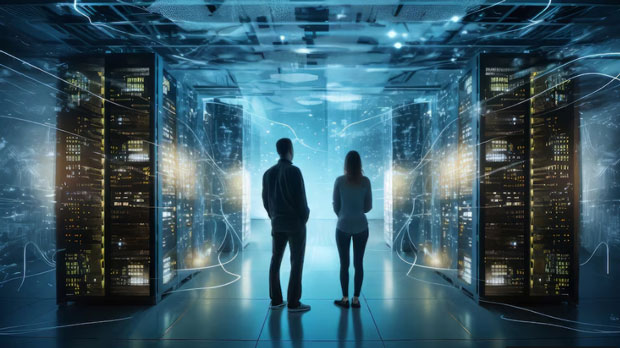In recent years, the use of proxy servers and online proxy browsers has become a common practice for users seeking privacy, security, and bypassing geographical restrictions. However, the question arises: Will using a proxy browser online increase latency, particularly under wireless network conditions? Latency, the time it takes for data to travel from one point to another, plays a crucial role in ensuring smooth internet browsing and streaming experiences. With wireless networks, where signal strength can fluctuate and cause interruptions, it is essential to understand whether incorporating a proxy browser will exacerbate latency. What is Latency and Why Does it Matter?Latency refers to the time delay experienced in transmitting data from the source to the destination. It is a critical factor in internet performance, particularly for real-time applications like gaming, video calls, and online streaming. A higher latency can result in noticeable delays, buffering, or lag, which can degrade the user experience.In wireless networks, latency can vary due to several factors:1. Signal strength and interference: Weak Wi-Fi signals or interference from physical obstacles can increase the time it takes for data to reach its destination.2. Network congestion: Multiple devices using the same wireless connection can cause network congestion, increasing latency.3. Routing and distance: The physical distance between the user and the wireless access point, as well as the number of network hops involved, can also affect latency.How Does a Proxy Browser Work?A proxy browser acts as an intermediary between the user and the websites they wish to visit. When a user connects to a proxy server, their internet traffic is routed through the server before reaching the destination. The proxy server handles requests on behalf of the user, which helps to mask the user’s IP address, bypass geo-restrictions, and enhance privacy.While this offers several advantages, there are also potential drawbacks. A proxy server introduces an additional layer of communication between the user and the destination server, which may add overhead. This can increase the time required to complete a request, resulting in higher latency. The Impact of Wireless Networks on Proxy Browser PerformanceWhen combining wireless networks with the use of a proxy browser, several dynamics come into play that can influence latency:1. Wireless Network InstabilityWireless networks, by their nature, are more prone to instability compared to wired connections. Fluctuating signal strength, interference from other devices, and distance from the router can all affect the speed and reliability of the connection. When using a proxy browser in such an environment, these inherent issues with wireless networks can compound the latency introduced by the proxy server itself. For example, if the wireless signal is weak, the data packets may take longer to reach the proxy server, further increasing the delay.2. Proxy Server Distance and RoutingThe location of the proxy server is another important factor in determining latency. If the proxy server is geographically distant from the user, the time taken to route data through the server can be substantial. With wireless networks, where signal strength and routing are already potential bottlenecks, this additional layer of communication can exacerbate delays.3. Proxy Server OverloadThe performance of a proxy browser can also be affected by the load on the proxy server itself. If the proxy server is overloaded with multiple users, the response times may be delayed, further contributing to increased latency. In wireless networks, where signal instability and congestion are already factors, an overloaded proxy server could significantly impact browsing speeds.Factors That Influence Latency in Proxy Browser UsageThere are several key factors to consider when assessing whether using a proxy browser will increase latency in wireless networks:1. Quality of Proxy ServerThe quality of the proxy server is a crucial factor. High-quality proxy servers are typically faster and more reliable, minimizing the latency they introduce. On the other hand, free or low-quality proxy servers may cause significant delays due to poor performance or overloading.2. Type of Proxy ServerThere are different types of proxy servers, including HTTP, SOCKS5, and others. The type of proxy server used can affect the latency. For instance, sock s5 proxies tend to be faster and more reliable than HTTP proxies, especially for applications requiring real-time communication.3. Wireless Network SpeedThe speed of the wireless network plays a pivotal role in determining overall latency. A high-speed Wi-Fi connection can reduce the impact of using a proxy server, while a slow or congested network will amplify the delays caused by routing traffic through the proxy.4. Network Traffic and CongestionThe amount of traffic on both the wireless network and the proxy server can also affect latency. A congested wireless network or an overloaded proxy server will increase the time it takes for data to be transmitted, resulting in higher latency.Does Using a Proxy Browser Always Increase Latency?While it is true that a proxy browser can introduce additional latency due to the extra communication steps involved, it does not necessarily mean that latency will always increase in a noticeable way. The actual impact on latency will depend on several factors, including:1. The quality of the wireless network connection.2. The type and location of the proxy server.3. The load on the proxy server.4. The type of traffic being transmitted.For instance, in cases where the wireless network is already unstable, the impact of the proxy browser may be negligible compared to the inherent latency of the wireless connection. Conversely, in cases of high-quality, stable wireless networks with a well-performing proxy server, the increase in latency might be minimal.Using a proxy browser online can potentially increase latency, especially when combined with the unpredictable nature of wireless networks. However, the extent to which latency is impacted depends on several factors, including network quality, proxy server performance, and network congestion. Users seeking to minimize latency while using a proxy browser should ensure they are connected to a stable, high-speed wireless network and select a high-quality, low-latency proxy server. By understanding the interplay between wireless networks and proxy servers, users can make informed decisions about how to optimize their online browsing experiences.
Sep 05, 2025



































































